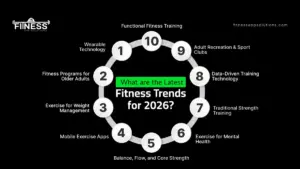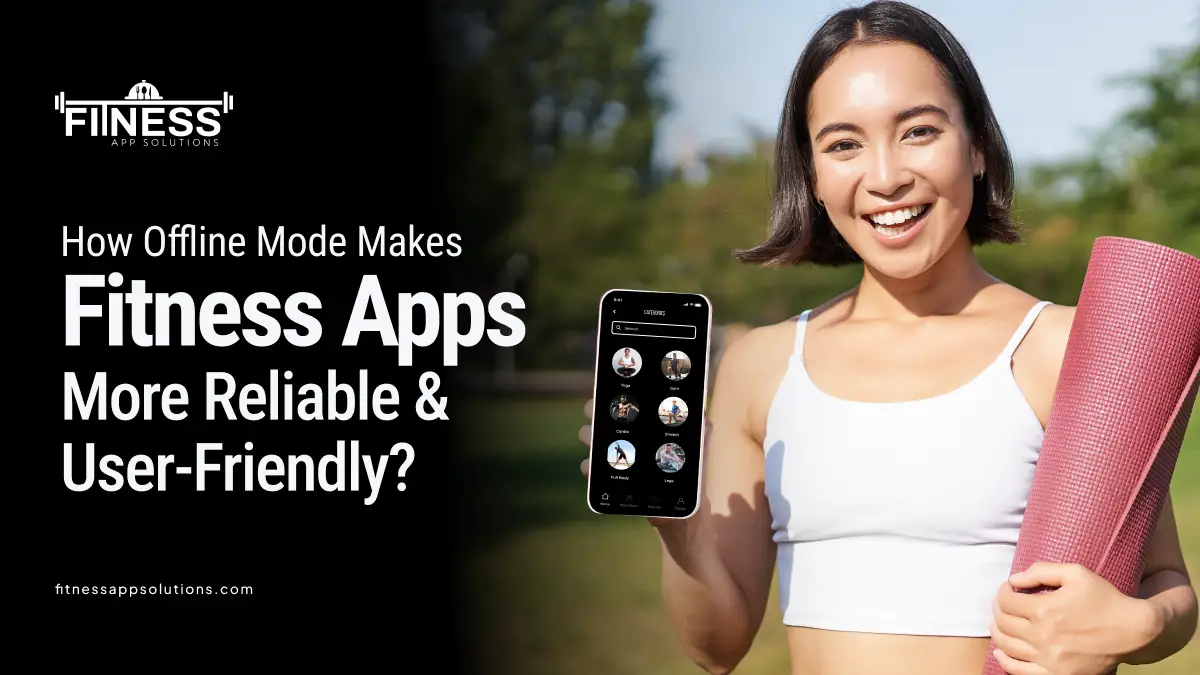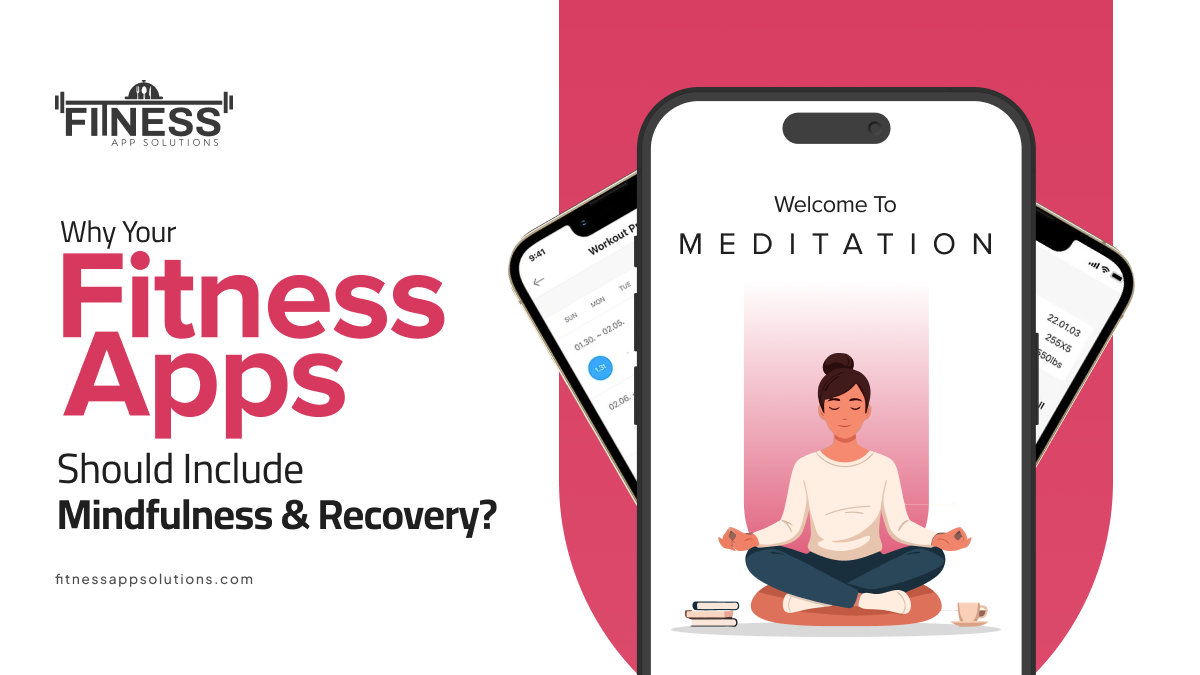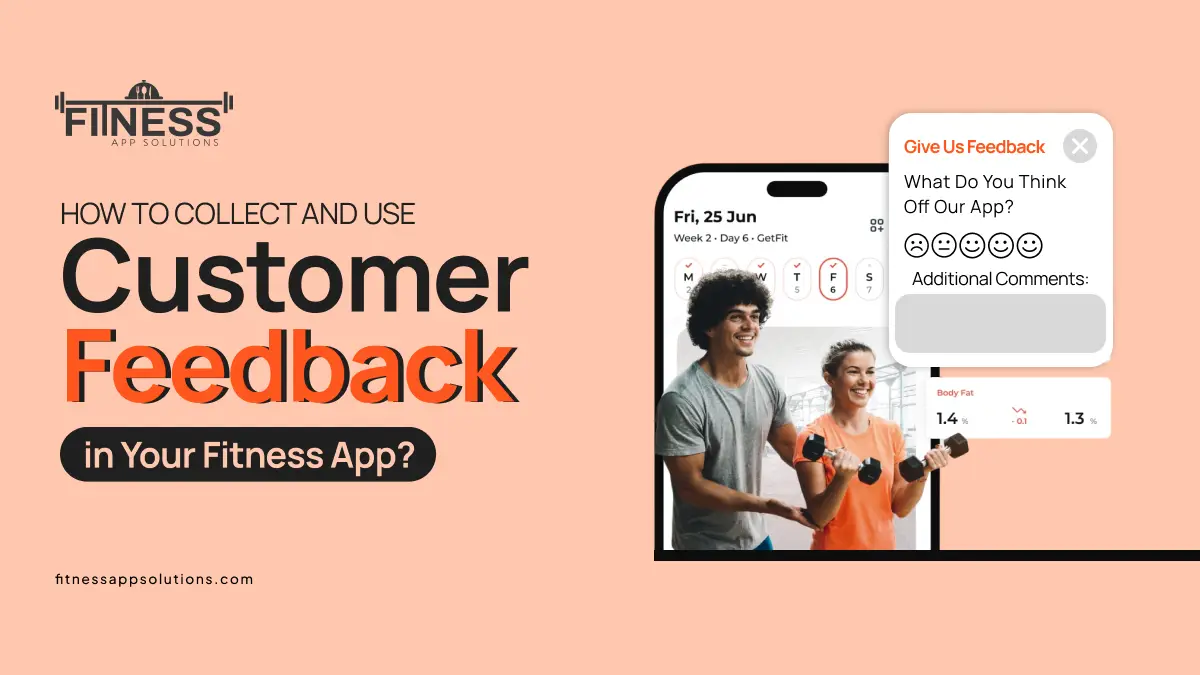Fitness is constantly evolving, and staying ahead of the curve can make all the difference in achieving your health goals. According to the American College of Sports Medicine (ACSM), the top fitness trends for 2026 highlight a blend of technology, inclusivity, and holistic well-being.
Whether you are an Enthusiast, fitness app developer, or business owner, understanding these trends can help you adapt to modern demands. In this blog, we will explore the benefits of integrating these trends into apps, review their evolution from 2021 to 2026, and dive into the latest list with detailed insights.
What are the Benefits of Implementing Evolving Fitness Trends in your Fitness App?
Implementing the latest fitness trends in an app boosts user engagement, retention, and accessibility while offering data-driven insights and new revenue opportunities. It integrates technologies like wearables and supports personalized experiences.
Benefits for Users
- Apps tailor workouts, nutrition tips, and feedback based on user goals and progress.
- Gamified elements like challenges, points, and leaderboards make exercise fun and encourage consistency.
- Users can work out anytime, anywhere, fitting busy schedules or remote locations.
- Monitor metrics such as steps, heart rate, and calories for better health insights over time.
Benefits for Businesses
- Personalized features and engagement tools build user loyalty and reduce churn.
- Analytics on user behaviour guide app updates, marketing, and feature development.
- Automation of tasks like scheduling helps manage larger user bases efficiently.
- Monetize through subscriptions, premium content, in-app purchases, and ads.
- Incorporating trends like AI and wearables differentiates the app and establishes it as an industry leader.
Evolving Trends (2021-2026)
| 2021 | 2022 | 2023 | 2024 | 2025 | 2026 |
|---|---|---|---|---|---|
| Online Training | Wearable Technology | Wearable Technology | Wearable Technology | Wearable Technology | Wearable Technology |
| Wearable Technology | Home Exercise Gyms | Strength Training with Free Weights | Worksite Health Promotion | Mobile Exercise App | Fitness Programs for Older Adults |
| Body Weight Training | Outdoor Activities | Body Weight Training | Fitness Programs for Older Adults | Fitness Programs for Older Adults | Exercise for Weight Management |
| Outdoor Activities | Strength Training with Free Weights | Fitness Programs for Older Adults | Exercise for Weight Loss | Exercise for Weight Loss | Mobile Exercise App |
| High Intensity Interval Training (HIIT) | Exercise for Weight Loss | Functional Fitness Training | Reimbursement for Qualified Exercise Professionals | Traditional Strength Training | Balance, Flow, and Core Strength |
| Virtual Training | Personal Training | Outdoor Activities | Employing Certified Exercise Professionals | High Intensity Interval Training | Exercise for Mental Health |
| Exercise is Medicine | High Intensity Interval Training (HIIT) | High Intensity Interval Training (HIIT) | Mobile Exercise Apps | Data-Driven Training Technology | Traditional Strength Training |
| Strength Training with Free Weights | Body Weight Training | Exercise for Weight Loss | Exercise for Mental Health | Exercise for Mental Health | Data-Driven Training Technology |
| Fitness Programs for Older Adults | Online Live and On-Demand Exercise Classes | Employing Certified Exercise Professionals | Youth Athletic Development | Functional Fitness Training | Adult Recreation & Sport Clubs |
| Personal Training | Health/Wellness Coaching | Personal Training | Personal Training | Health/Wellness Coaching | Functional Fitness Training |
(Source: acsmfoundation)
What are the Latest Fitness Trends for 2026?

The 2026 latest fitness trends, as per the American College of Sports Medicine (ACSM) report, are:
1.Wearable Technology
Description and Benefits: Wearables like smartwatches (e.g., Apple Watch or Fitbit) and fitness bands track metrics such as heart rate, sleep quality, steps, and calories burned in real-time. This trend promotes proactive health management by providing personalized feedback, helping users adjust workouts for better results, and preventing overexertion or injury.
Examples: Integration with apps for guided runs or yoga sessions based on biometric data; virtual coaching that adapts to user fatigue levels.
Implementation and Challenges:
asily incorporated into apps via APIs for seamless data syncing. Challenges include data privacy concerns and battery life, but advancements in AI are mitigating these.
Impact: Expected to grow as users seek quantifiable progress.
2.Fitness Programs for Older Adults
Description and Benefits:
Specialized programs focus on low-impact activities like chair yoga, water aerobics, and balance exercises to enhance mobility, reduce fall risks, and maintain independence. They cater to the growing elderly population, improving quality of life and reducing healthcare costs.
Examples: Community centers offering senior-specific classes or apps with modified routines for arthritis or joint issues.
Implementation and Challenges: Partner with healthcare providers for certified programs; challenges include accessibility for those with mobility limitations, but virtual options help.
Impact: With global aging trends, this trend addresses a market of over 1 billion people aged 60+, promoting longevity through tailored, safe exercise.
3.Exercise for Weight Management
Description and Benefits:
Combines cardio, strength, and dietary guidance for sustainable weight loss, focusing on metabolism boosting and habit formation. It helps combat obesity-related issues like diabetes and heart disease by emphasizing long-term lifestyle changes over quick fixes.
Examples: HIIT sessions paired with meal-tracking apps or group challenges for accountability.
Implementation and Challenges: Use data analytics in apps to create custom plans; challenges involve user consistency, but gamification (e.g., rewards for milestones) improves retention.
Impact: Supports public health goals, with evidence showing that combined exercise and nutrition reduce weight by 49% more effectively than diet alone.
4.Mobile Exercise Apps
Description and Benefits: Apps deliver workouts, coaching, and tracking on smartphones, offering flexibility for users with busy schedules. They enhance motivation through social features and AI recommendations, making fitness portable and interactive.
Examples: Apps like Peloton or Nike Training Club with live streams, progress dashboards, and community forums.
Implementation and Challenges: Develop user-friendly interfaces with offline capabilities; challenges include screen fatigue, but integrating wearables adds value.
Impact: With 345 millions of smartphone users accessing health apps, this trend democratizes fitness, boosting global participation.
5.Balance, Flow, and Core Strength
Description and Benefits
Emphasizes exercises like Pilates, yoga flows, and stability drills to strengthen the core, improve posture, and enhance coordination. This reduces injury risk and supports mental relaxation, appealing to those seeking mindful movement.
Examples: Apps offering guided sessions with visual cues for proper form or studio classes combining breathwork and strength.
Implementation and Challenges: Incorporate into routines via short daily videos; challenges for beginners include learning curves, but progressive levels help.
Impact : Popular for holistic benefits, with research linking core training to better athletic performance and reduced back pain.
6.Exercise for Mental Health
Description and Benefits:
Workouts designed to alleviate stress, anxiety, and depression through activities like mindful walking, group therapy sessions, or endorphin-releasing cardio. It integrates physical activity with psychological support, fostering emotional resilience.
Examples: Apps with meditation-guided runs or community mental health fitness groups.
Implementation and Challenges: Collaborate with therapists for evidence-based content; challenges include stigma but normalizing it through education helps.
Impact: Amid rising mental health crises, this trend shows exercise can reduce symptoms by 78%, per studies.
7.Traditional Strength Training
Description and Benefits: Classic methods using weights, machines, or body resistance to build muscle, bone density, and overall power. It remains timeless for its proven results in metabolism enhancement and functional strength.
Examples: Gym routines with squats, deadlifts, and bench presses, or app-guided home setups.
Implementation and Challenges: Start with beginner programs; challenges like equipment access are solved by bodyweight alternatives.
Impact: Appeals to all ages, with data showing it improves bone health and reduces frailty in seniors.
8.Data-Driven Training Technology
Description and Benefits: Uses Artificial Intelligence, machine learning, and analytics to analyse user data for optimized workouts, predicting injuries or plateaus. It personalizes training, making it more efficient and engaging.
Examples: Apps that adjust plans based on past performance or integrate with wearables for predictive insights.
Implementation and Challenges: Require robust data systems; challenges include data accuracy, but ethical AI practices ensure trust.
Impact: Drives innovation, with tech-savvy users seeing better results from customized plans.
9.Adult Recreation & Sport Clubs
Description and Benefits: Clubs provide social, non-competitive sports like pickleball, soccer leagues, or hiking groups, promoting fun and community while improving fitness. They encourage lifelong activity through teamwork and camaraderie.
Examples: Local clubs offering seasonal leagues or app-connected events for virtual participation.
Implementation and Challenges: Build partnerships with venues; challenges include inclusivity for all skill levels, but diverse offerings help.
Impact: Fosters social bonds, with participation linked to lower loneliness rates and sustained exercise habits.
10.Functional Fitness Training
Description and Benefits: Focuses on movements that mimic daily tasks, like lifting, twisting, or jumping, to enhance real-world strength and agility. It prevents injuries and improves quality of life by building practical power.
Examples: CrossFit-style workouts or app modules with obstacle simulations.
Implementation and Challenges: Use versatile equipment; challenges for novices include intensity, but scaled programs ensure safety.
Impact: Grows with demand for versatile training, showing benefits in everyday mobility and sports performance.
Conclusion
The top 10 fitness trends for 2026 emphasize technology, inclusivity, and mental health, reflecting broader societal shifts toward personalized and holistic wellness. By integrating these trends into apps, routines, or business strategies, you can enhance user engagement, improve health outcomes, and drive innovation. Whether you are an individual seeking better fitness habits or a developer building the next big app, these insights offer actionable opportunities.
Frequently Asked Questions (FAQs)
What is the most popular fitness trend for 2026 according to ACSM?
Wearable Technology, offering real-time data and personalized feedback.
How can fitness trends benefit older adults?
Through low-impact programs like chair yoga, improving mobility, and reducing fall risks.
Why is Exercise for Mental Health gaining traction?
It reduces stress and anxiety by integrating physical activity with psychological support.
What role do mobile exercise apps play in 2026 trends?
They provide flexible, on-the-go workouts with AI and social features for busy users.
How can businesses implement Data-Driven Training Technology?
Use AI to analyse data for customized plans and better user retention.



